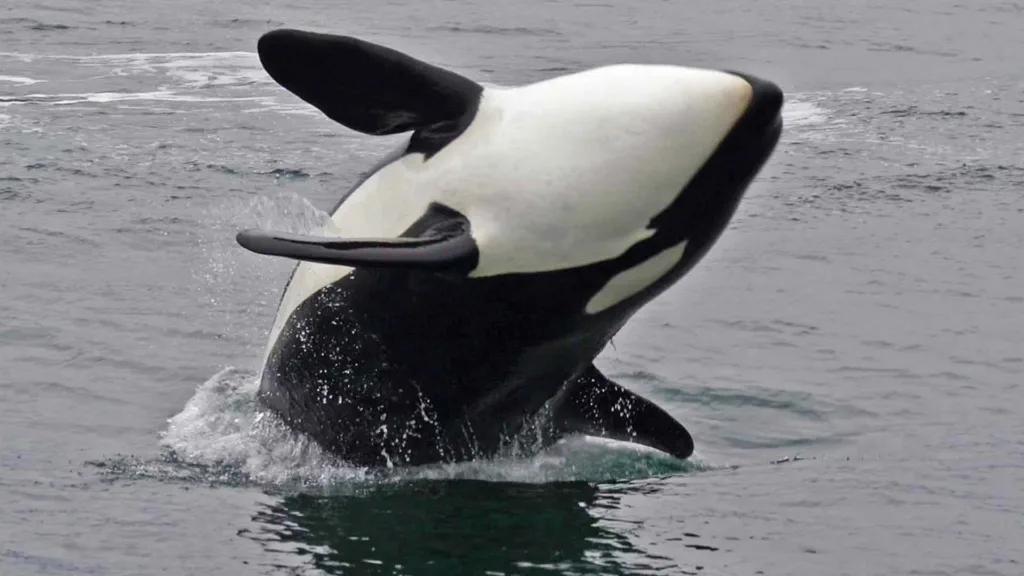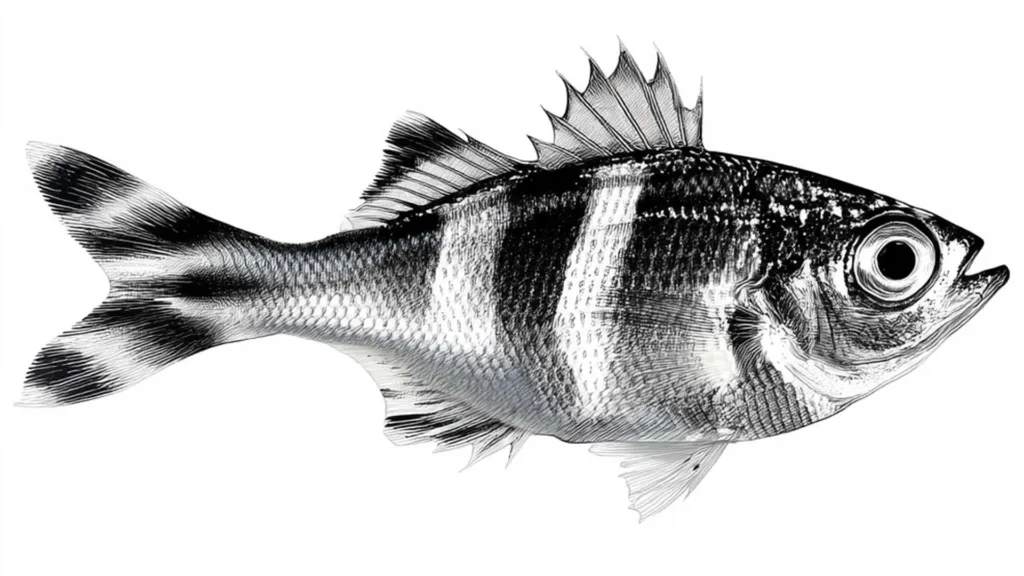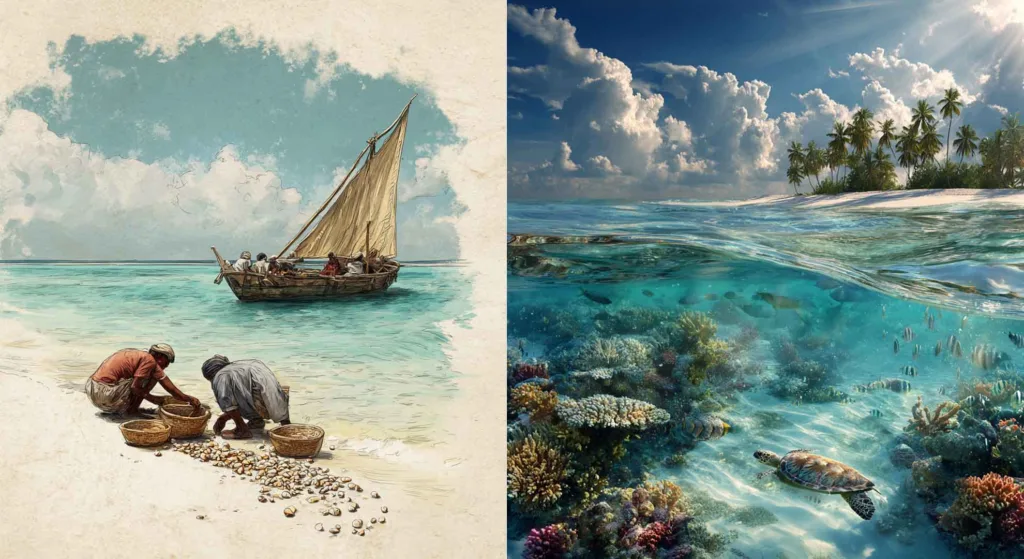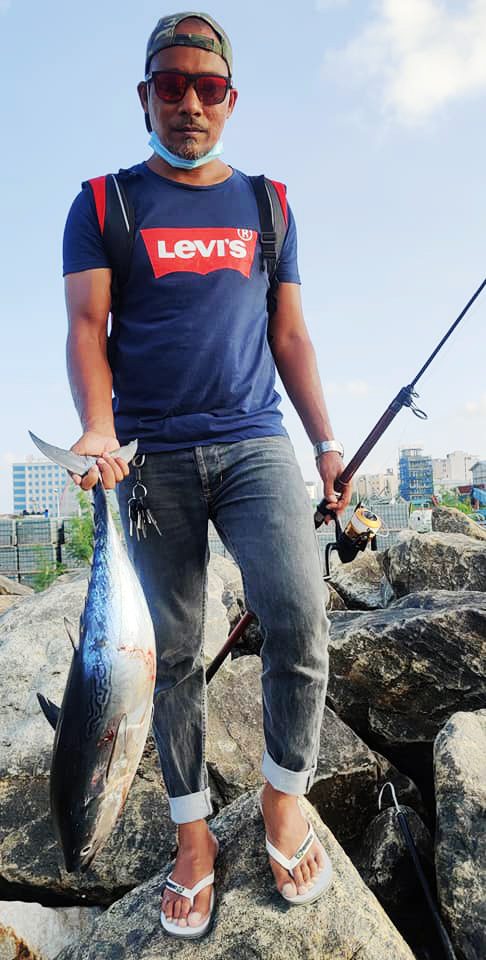
Beach fishing also involves variety of techniques to catch reef fish. I use baits and lures to catch reef fish. In this article I am writing about some techniques that I use to catch some reef fish. The fish I normally catch by beach fishing are:
- Kawakawa or mackerel tuna (latti)
- Blue trevally (fani handhi)
- Green job fish (giulhu)
- Small spotted dart (vaalaa)
- Snubnose rudderfish (kirulhiya mas)
Normally fishing rods of 10 to 16 feet and spinning reel sizes of 4000 to 6000 will be used in this method. I use monofilament line between 20 to 50lb. But braid lines (PE 2 to PE4.5) can also be used. Braid line can be an advantage for casting as it will get a very long cast. However, I have encountered extremely difficult situations where the braid lines get entangled in the corals while the fish is being pulled up ultimately losing the ‘trophy.’ I normally use Shimano Saragosa, PENN Battle 2, PENN Spinfisher reels and Kast king reels. For reels I use Fiesta telescopic rods 12 to 14 feet in length, Abu Garcia Tournament and Shimano Lurematic rod. I will write in details about the reels and rods in separate articles.
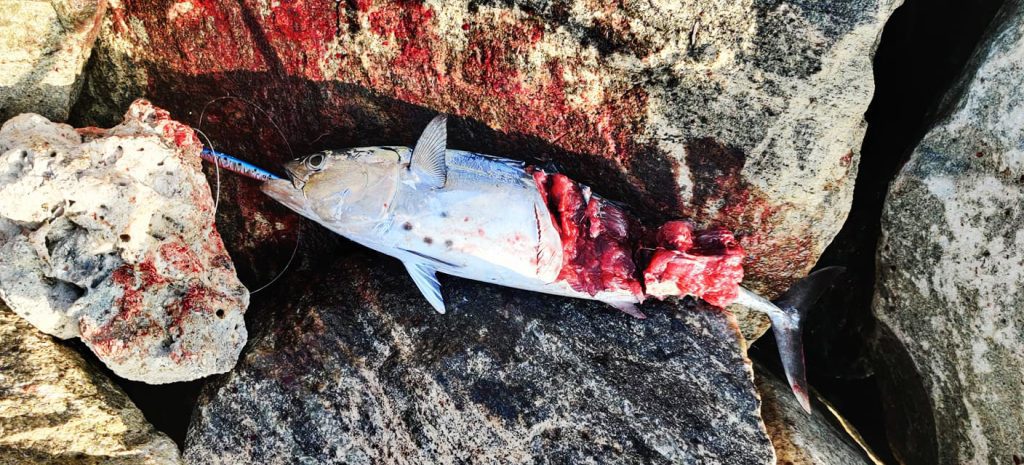
Normally I use 30-to-80-gram lead lures/jigs that resembles small bait fish. I wait for surface ripples or disturbances, waiting for them to show up. Kawakawa chase school of bait fish. They chase small fish and come inshore. Small bait fish can be seen leaping out of the water as the kawakawa shows up. Chases and dives can be observed. This commotion is seen as a ruffing effect on the surface where the bait school are moving.

The moment I spot them, I quickly fling the fishing rod. In the capital island of Male’, I will be stationed on the rock boulders, which is around 5 to 10 feet above sea level. Therefore, there is elevation that would limit vertical or beach jigging to be carried out. I maneuver horizontal side-to-side flicks to attract the fish. Kawakawa moves along the reef-drop off which is around 150 feet away from where we are staying. But they move through the reef front as well. The lure will land around 100 to 200 feet away from the point where I am staying. If there are schools of Kawakawa fish, sometimes they bite and swallow the lure as it lands on the surface and descends to a depth of three to four feet. But if there are less Kawakawa, I let the lure sink to around 100 to 200 feet below the surface. This takes around 30 to 60 seconds for the lure to sink depending on the current.
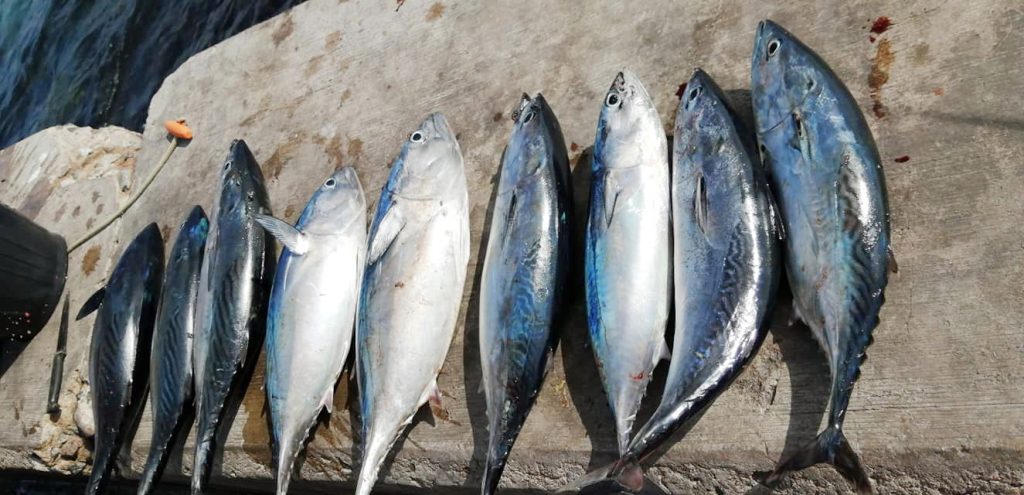
Sometimes I let the lure sink and touch the bottom of the sea. But I have to be very careful as the lure may entangle on the corals. Then I begin the retrieval process. I pull it at a moderate speed with pauses within 10 to 20 second intervals. If the Kawakawa dares to strike the lure, it will swallow it and run away with it. Sometimes they strike the lure in which the hook is accidentally rigged on the body of the fish. I have landed many Kawakawa with the hooks rigged on their belly. This is also an excitement of fishing. Kawakawa are fast swimmers. When they are hooked up, they move aggressively. I have encountered several shark attacks on Kawakawa while I was pulling them. Sometimes I lose it; in other instances I get the head part.


